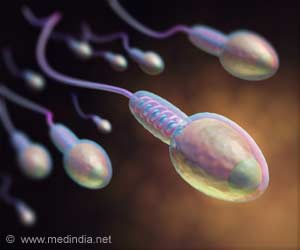The winning sperm has a few vital molecular characteristics that differentiate them from those left behind, according to new research.

‘A better understanding of how the fittest sperm cells are chosen and how those left are discarded following fertilization in the female reproductive tract can enhance current assisted reproduction strategies.’





Researchers refer to them as the sperm's racing stripes.
According to scientists, one of the subunits that form these racing stripes is important in selection of sperm for fertilization.Using artificial neural network modeling and 3D molecular imaging, Chung's lab devised a way to visually track and quantify sperm in female mice's reproductive tracts after mating. They found that the sperm which advanced from uterus to oviduct had the channels containing intact Catsper1 subunit. Other sperms likely lost functioning CatSper ion channels by losing intact CatSper1. These sperms become immobile and are left behind.
Sperms that make it far into the female reproductive tract share additional traits. These sperms are most likely to have already lost a cap-like structure known as the acrosome in the sperm head, possibly a prelude to fertilizing the egg.
More understanding of interactions within the reproductive tract and molecular signatures of sperm may help inform new infertility treatments or, conversely, male birth control. Mutations have been observed in the CatSper genes of infertile men and could target fertility treatments. Chung said Since the CatSper channel is necessary for sperm to function, blocking it could lead to non-hormonal contraceptives with minimal side effects in both men and women.
Chung stated, "Better understanding how the fittest sperm cells are chosen and how those left are discarded after fertilization in the female reproductive tract can enhance current strategies for assisted reproduction."
Source-Medindia










